Here are six bizarre specialties from around the country which every gourmand worth their salt should try at least once – but be warned, they're not for the squeamish!
Pig's blood chocolate pudding: Sanguinaccio Dolce
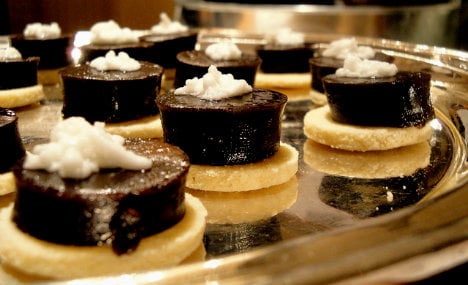
Biscuits topped with sanguinaccio dolce. Photo: Snekes/Flickr
Sanguinaccio is the Italian version of what British people call 'black-pudding' and what Americans know as 'blood sausage' yet confusingly, sanguinaccio dolce doesn't contain a single sausage and is, in fact, a desert made from pig's blood and chocolate.
The dish is traditionally eaten in the run-up to Easter across much of Italy's centre-south, but is particularly associated with the region of Basilicata, on the instep of Italy's boot.
The recipe combines dark chocolate with pig's blood to make a rich, sweet and acidic cream, which can be eaten with savoiardi biscuits or used as a filling for shortcrust pastry tarts.
Maggot-infested cheese: Casu Marzu
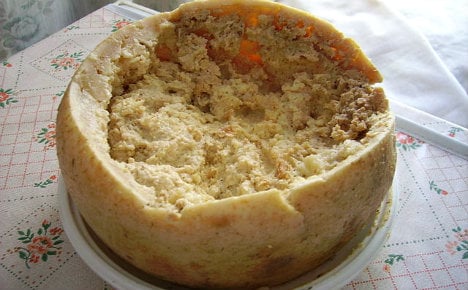
Photo: Sharidan /Wikimedia
A must for all cheese lovers, Casu Marzu is a sheep's milk cheese derived from Sardinia's local specialty: Pecorino.
Making Casu Marzu is simple. Take a wheel of Pecorino, cut off the rind and then leave it outside for a couple of months – until flies start to lay their eggs inside.
Once the cheese fly, called Piophila casei, has laid thousands of eggs inside, the larvae hatch and set about fermenting the Pecorino – a process which involves eating the cheese, and then excreting it…while inside the wheel.
After a couple of months the cheese is soft, putrid and crawling with maggots.
Traditionally the cheese is eaten with the cracker-like flatbread, pane carasau – sometimes referred to a music paper bread – and has a flavour so strong the after-taste lasts for several hours.
It's not for the faint-hearted. The maggots are capable of leaping up to 15 cenimetres and can fly off in all directions as you try to take a bite.
Casu Marzu is the most famous of Italy's maggot fermented cheeses, but there are several similar cheeses produced across Italy, such as Gorgonzola coi grilli in Liguria, and Saltarello in Friuli.
The legal status of these cheeses is uncertain as they violate EU standards of food hygiene – so you won't find them in delicatessens or at the supermarket.
The cheeses are usually home-made by surviving pastoralists, so your best chance at trying these dying delicacies is to ask around when travelling through the rural backwaters of Italy.
Calf intestine stew: Pajata
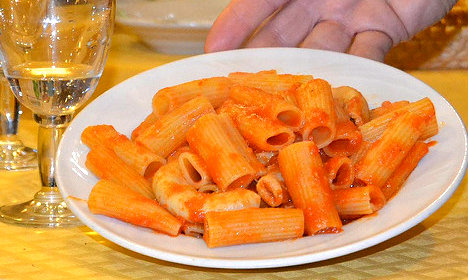
Photo: Monica/Flickr
Pajata is a delicious Roman dish made from calves' intestines stewed in tomato sauce.
What makes the dish so special is that before arriving at the butchers' block the calves have not been weaned from their mothers and had only ever consumed milk.
A partially-digested milky residue called chyme remains in the calves' intestines and curdles as they are cooked, enriching the tomato sauce with a creamy cheese-like substance.
The steaming stew is normally served over a heap of chunky pasta tubes known as rigatoni and has only recently reappeared on the menus of Rome''s restaurants.
The dish was banned by the EU in 2001 over concerns about the spread of BSE.
Hairy greens: Agretti
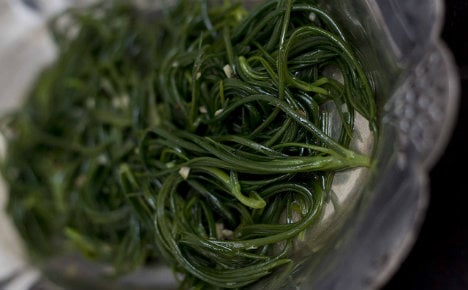
Agretti, a seasonal treat. Photo: Wei-Duan Woo/Flickr
Another fascinating and little-known Italian food is agretti, which is also known as barba di frate, meaning friar's beard.
While that's a name that doesn't exactly get the mouth watering, the long needle-like green is succulent, earthy and difficult to find.
It only grows on short strips of saltwater irrigated land in Umbria and Lazio and hits Italian markets during a brief window each spring.
Historically, the curious looking veg was generally grown to be burnt, not eaten, as the ash from the plants used to be a key ingredient in soap and glass production. However, the plant has enjoyed a renaissance in Italian kitchens in recent years – and with good reason.
Blanched in boiling water and tossed in a pan with olive oil and lemon juice, its flavour really is unique.
Pure pig fat: Lardo di Colonnata
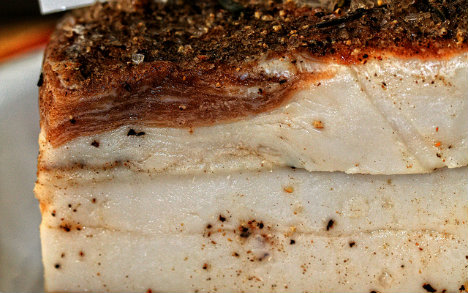
Dieters beware: lardo di Colonnata. Photo: Mon Oeil/Flickr
Instead of going for some delicious prosciutto – why not ask for for Lardo di Colonnata?
Nothing beats these delicious slices of pork fat cured with spices. There are many variations of lardo avaliable throughout Italy but the version from the Tuscan town of Colonnata is the most prized.
It's quite a delicacy, thanks to its mild, almost soapy flavour which makes it an excellent accompaniment to a glass of fine Italian wine.
Being pure pig fat, it is obviously not recommended for anyone who's on a diet: just four slices of the stuff contain a whopping 740 calories.
Spleen sandwiches: Pani ca meusa
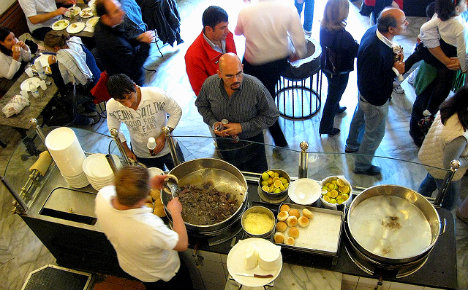
Locals line up for a spleen sandwich. Photo: Franco Pecchio /Flickr
Pani ca meusa, meaning bread with spleen in Sicilian dialect, has to be one of Italy's most iconic, and admittedly off-putting, street foods.
Amid the ancient cobbled streets of Palermo's historic centre several fast food places and ambling hawkers do a roaring trade in the spleen sandwich, which has been a mainstay of the western Sicilian diet for centuries.
The spleen is boiled and sliced before being cut into long black strips and fried in huge smoking vats.
Once cooked, it's lathered between two hunks of soft, white bread and the sandwich is topped off with heaps of creamy ricotta or cacciocavallo cheese.
The monster sandwich gives your jaw a good workout thanks to the leathery texture of the spleen and the flavour is something else entirely, a bit like liver, but not quite.




 Please whitelist us to continue reading.
Please whitelist us to continue reading.
Member comments